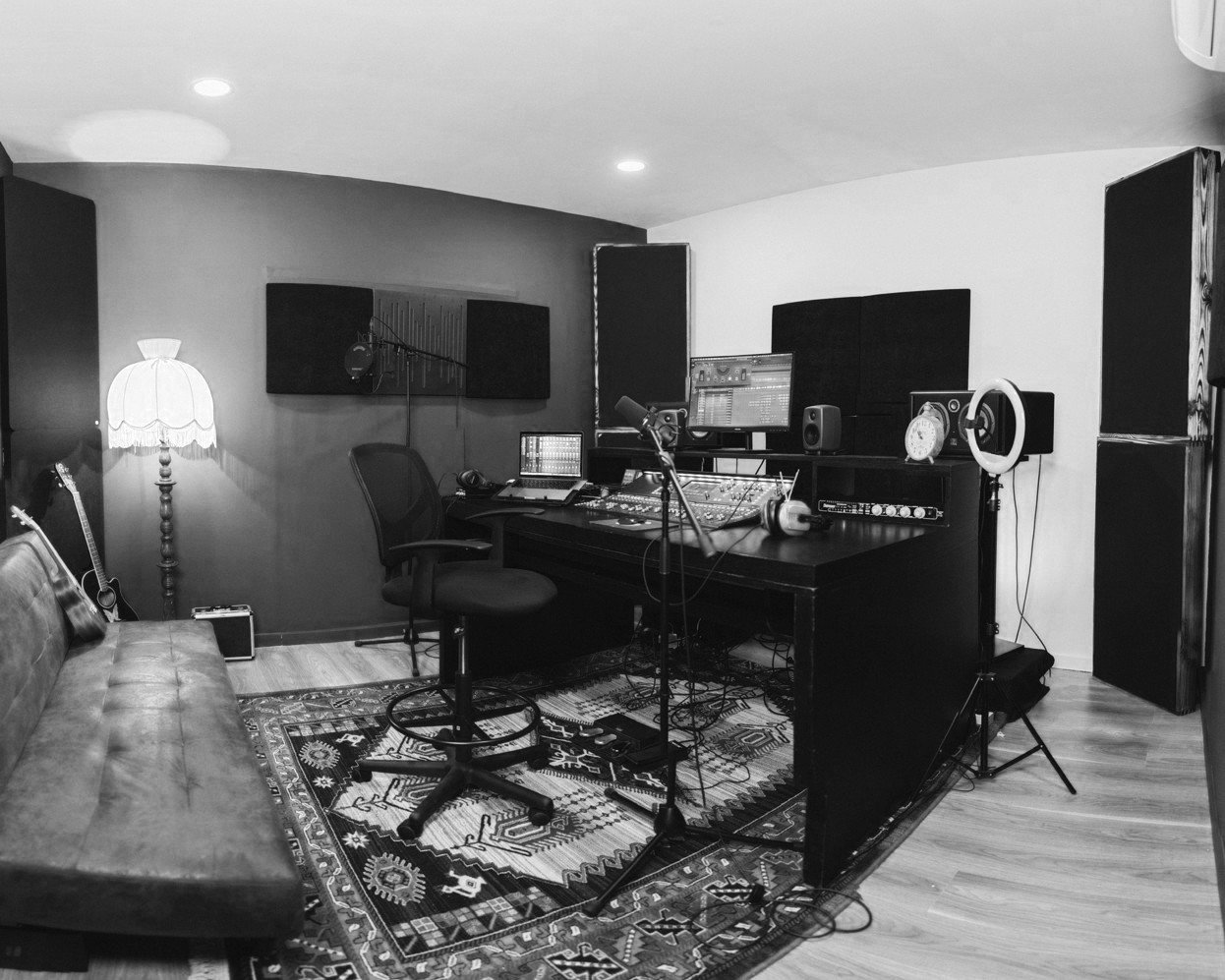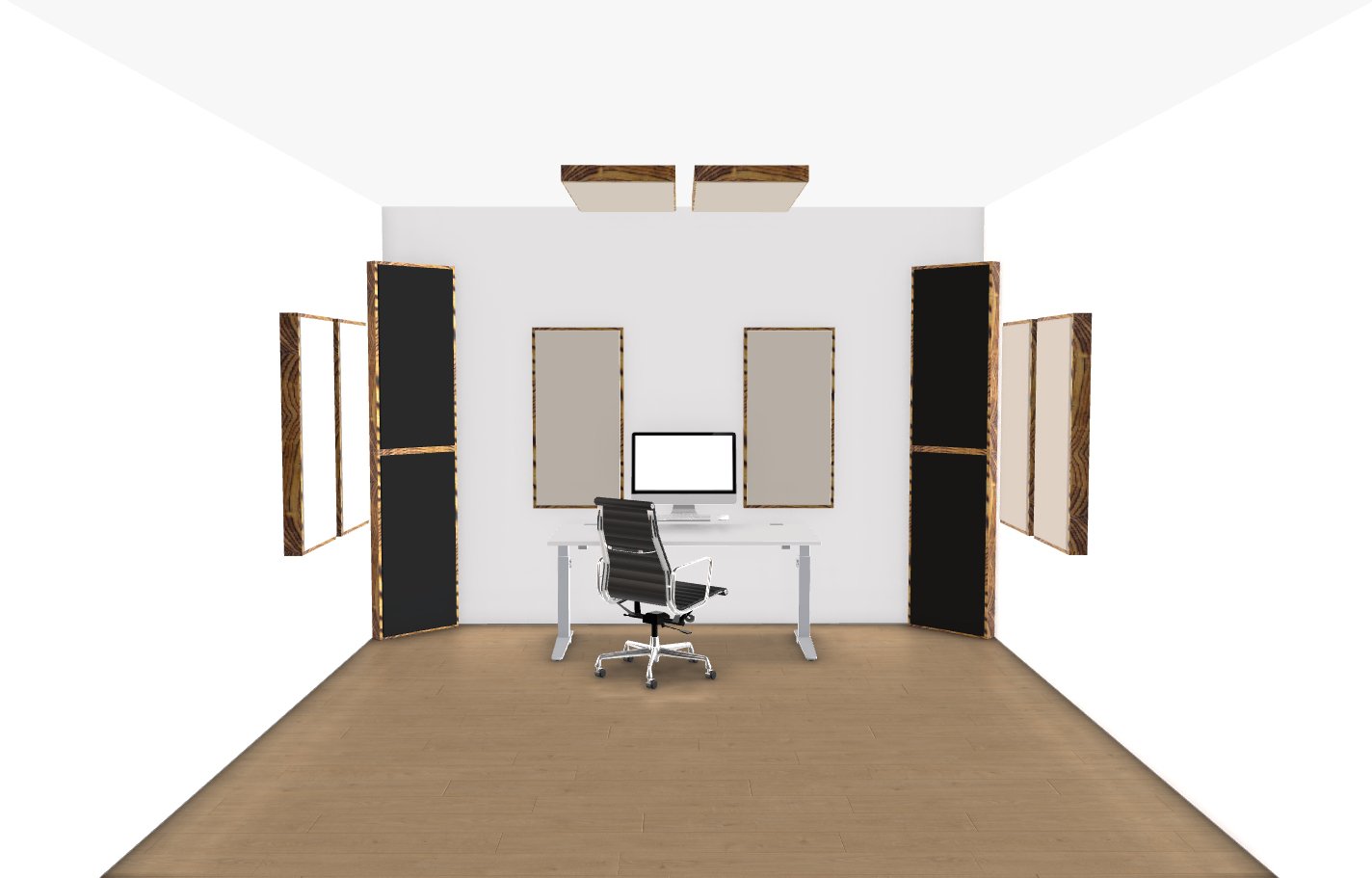Bass absorption
Taming the low-end
-
Our bass absorbers can reliably go down below 100 Hz. How do we do it? We combine more absorption technologies together to really give you the biggest bang for the buck.
By combining scientific and hand-on approach, every single absorber that leaves our workshop is a unique and truly functional piece of acoustic furniture.
-
No matter its size or shape, every room can be treated in a way that achieves acoustic comfort and great sound.
If your room is smaller or rectangle shaped, you’re probably going to need more bass absorption than you’ll expect. It’s just like that, the smaller the room, the more bass chaos you’ll hear.
Check out our blog for a few simple tips and tricks how to use bass absorbers and resonators effectively.
-
Foam corner pieces are usually better than nothing, but if you take acoustics seriously, do you want to have poorly performing foam glued in your corner?
This is where we step in. Not only do our bass absorbers look like classy furniture, but they are also performing more than two times better than classic foam bass traps.
Low-frequency absorbers
Resonators
Complex solutions
Q&A: Low-frequency absorption
Why corners?
Low-frequency sound waves have the highest energy in the corners of the room. That’s why you want to absorb them right there.
The smaller and the more cubic the design of your room, the more low-frequency mess your room will produce. This is due to room modes, the collection of resonances that exist in the room.
Room modes might seem a little tricky at first, but you can get a good idea of what they are if you read our home studio guide and tips & tricks section.
How many absorbers should I use?
Start by putting at least two but preferably four pieces in the corners of your room. This will certainly improve the acoustics, but it may not be enough. Additional absorbers will probably be required if low frequencies still sound rather messy.
Having said that, more is not necessarily better. Before you order more absorbers, we recommend you consult our room modes calculator and measure the frequency response. This will help you decide how many absorbers you really need.
It isn’t as complicated as it might sound. Still, feel free to get in touch if you need any help.
Why is it so expensive?
Woody Wavy combines the benefits of conventional porous absorbers and innovative membrane technology, featuring a membrane that despite being heavy, is thin and flexible. Its sophisticated design translates into market-leading effectiveness across the entire deep and low bass frequency spectrum (up to 100 Hz).
Put simply, the price is higher because it’s good and costs more to produce.
Can I use the wall panels Woody Queen instead of Woody Wavy?
Absolutely. Woody Queen panels are quite effective at low frequencies, but not quite as effective as a Woody Wavy.
Don’t despair if our Woody Wavy absorbers are out of your budget now because of their unique and sophisticated design. Conventional porous features can do a good job too. Just remember that because low-frequency sound waves are very long, they need to be absorbed quite far from the wall (leave a gap behind the Woody Queen).
Is this the bass trap?
Absorbers designed to damp low-frequency energy are commonly referred to as bass traps. This is despite the fact that technically speaking, there is no way for you to trap bass.
That being said, we don’t mind if you call our Woody Wavy a bass trap. What matters to us is it works – and really well at that.
What is the difference between Woody Wavy and Woody Resonator?
Wavy is designed to absorb as much bass energy as possible (40-80 Hz). The Resonator is designed to absorb only a very narrow frequency spectrum (for example 45-48 Hz).
Where should I place the Woody Resonator?
Placement is recommended as close to the listening position as possible. By experimenting with the placement, you can find out that in some parts of the room, the resonator might absorb more energy than in others. Sidewalls and front walls close to the corners are ideal.
How many resonators should I use?
While a single resonator will absorb a lot of energy over a narrow frequency spectrum, more are usually required to achieve the best result, especially in bigger rooms. You can start with one resonator tuned to a specific frequency, and if you see that the peak of the frequency is still too high, you can add more.
In a typical home studio, you’ll probably need at least two resonators to attenuate the sound pressure level by more than 5 dB. If it’s just a few dB, one should be enough.










Featuring high-performance membrane technology, Woody Wavy is a handcrafted acoustic absorber designed to tame the lowest frequencies. On top of that, its classy wooden look is sure to add a touch of glamour to your room or studio.
Key features:
instant absorption of low-frequencies (bass)
membrane technology - the highest effectiveness between 40 - 80 Hz
additional acoustic material from recycled PET (OEKO-TEX®)
no mineral wool used - doesn’t release micro-particles into air
corner placement (bass trap)
luxury patented wooden finish
save up to 20 % when buying in bulk